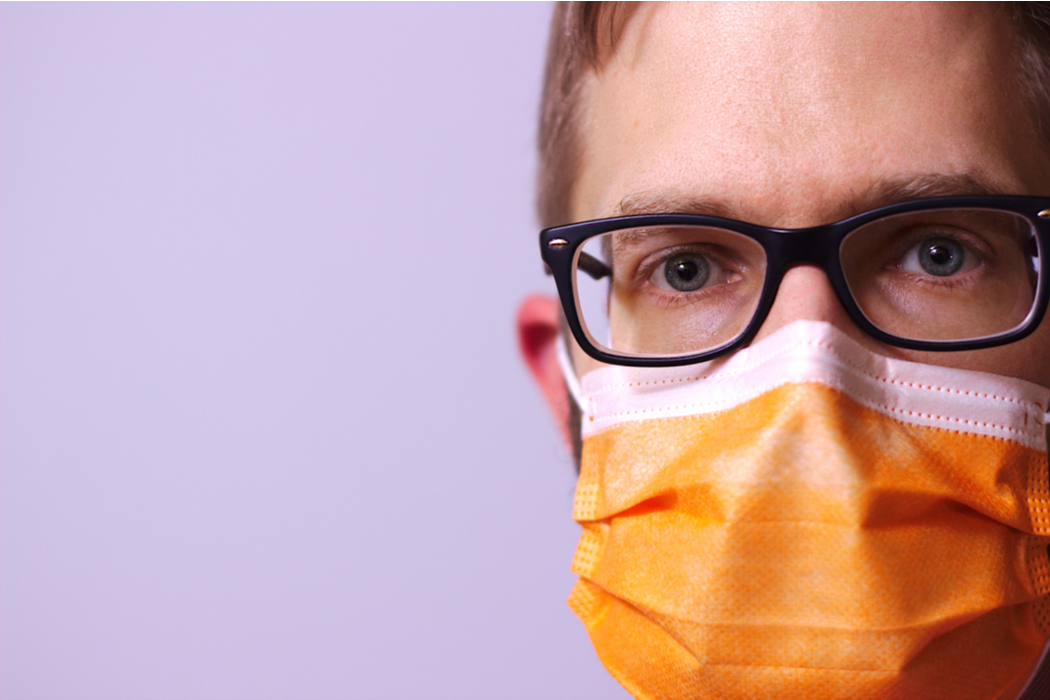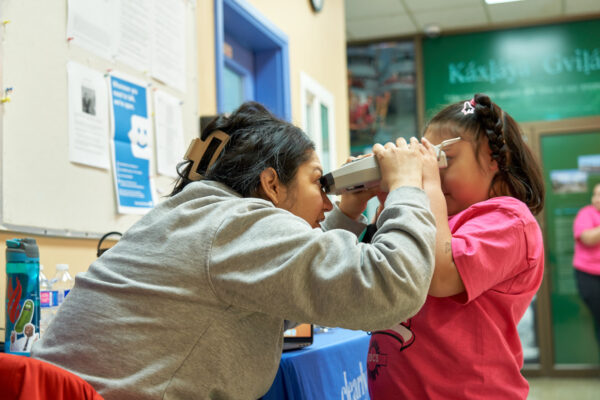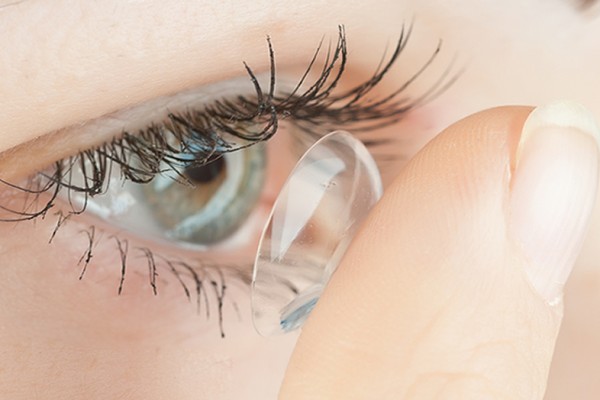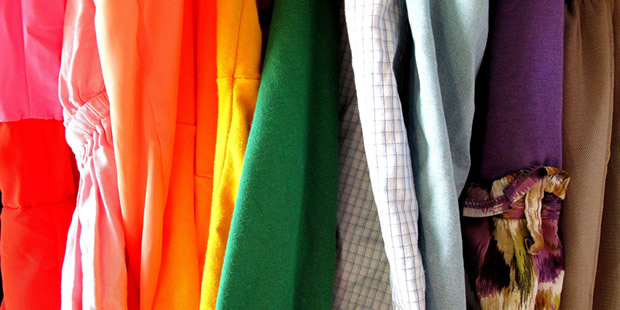This post is also available in:
![]() Français (French)
Français (French)
Social distancing, hand-washing and self-isolation are the buzzwords of the day, all playing a key part in limiting the spread of COVID-19.
But did you know this coronavirus may also be able to spread through your eyes?
Don’t worry – you can still wear your contacts and glasses. But you’ll need to make sure you’re washing your hands before handling them, as well as practicing a regular eyecare cleaning regime.
In fact, you could be adding another layer of protection simply by wearing glasses, according to the American Academy of Ophthalmology (AAO). Glasses don’t provide complete coverage, but they do provide an added barrier against viruses coming at you head-on.
We’re learning more of this virus on a daily basis, but what we do know could point to the eyes as a method of spread — and a place to look for early signs of the disease.

What is coronavirus?
The novel (new) coronavirus is part of a family of seven known coronaviruses. This new virus causes the disease known as COVID-19. You probably remember the SARS and MERS outbreaks in the not-so-distant past; these were also coronaviruses.
This coronavirus is respiratory in nature. Its symptoms can range from mild and cold-like to moderate and flu-like, potentially leading to pneumonia, kidney failure or even death in the most severe cases.
According to the Government of Canada, people with certain medical conditions such as heart or lung disease, high blood pressure, diabetes or cancer — along with adults over 65 years old and those with weakened immune systems — are at the highest risk of developing a severe case of COVID-19.
Most cases involve mild or moderate symptoms, and many people report no symptoms at all. This is one of the reasons Canada continues to encourage social distancing for everyone, not just people who feel sick.
Can coronavirus enter through my eyes?
It’s thought to be very likely that coronavirus can spread through the eyes. However, this isn’t a common method. Airborne respiratory droplets (usually from a cough or sneeze) and person-to-person distances of less than two metres are the most common ways the virus can cause infection.
The virus can enter your eyes (and more likely, the nose or mouth) after you touch a contaminated object then touch your face, especially if your hands weren’t washed in between.
Can coronavirus cause eye-related symptoms?
We’re hearing more and more about the presence of conjunctivitis, commonly called pink eye, as one of the many symptoms of COVID-19. These cases are relatively uncommon.
Conjunctivitis can cause eye redness and irritation, and often crustiness and discharge.
Based on a New England Journal of Medicine study of COVID-infected patients in China, 9 out of 1,009 (0.8%) also had conjunctivitis. The American Academy of Ophthalmology estimates pink eye could occur in as many as 3% of patients.
Conjunctivitis can also accompany a more common cold or flu, so it’s important to note that pink eye doesn’t automatically mean you have COVID-19.
What can I do to prevent contracting or spreading coronavirus?
For the most up-to-date information, the Government of Canada has set up a detailed COVID-19 portal.
Currently, the government is offering the following suggestions:
Self-monitor, self-isolate, and isolate
Monitor yourself closely for symptoms for 14 days if you’re currently asymptomatic and:
- Have been exposed to COVID-19 in the past 14 days.
- Are in contact with older adults or medically vulnerable people.
- Your Public Health Authority has requested local isolation.
Self-isolate at home and avoid contact if:
- You may have contracted COVID-19 by travelling outside of Canada in the last 14 days.
- You came in close contact with someone who has COVID-19.
- Note: Going outside is still permissible, as long as you keep a two-metre distance from other people. This equals about two arm-lengths.
Strict isolation at home is required if:
- You have any symptoms of COVID-19, even mild ones.
- You have tested positive for COVID-19.
- You have been tested for COVID-19 and are currently waiting for test results.
- Your Public Health Authority has advised isolation.
Social distance
- Avoid any crowded areas and non-essential gatherings.
- Avoid greetings that require physical contact, including handshakes.
- Limit any close contact with older adults or people at higher risk.
- Remain at least two metres away from other people.
Maintain proper hygiene
- Wash your hands often with soap and water, for at least 20 seconds each time. This is especially important after using the washroom and while preparing food. Alcohol-based hand sanitizer can be used as a backup.
- Cough or sneeze into a tissue or into the bend of your arm if a tissue isn’t available. If you used a tissue, dispose of it after one use then wash your hands. Never cough or sneeze directly into your hands.
- Avoid touching your eyes, nose or mouth, especially when you haven’t washed your hands.
Clean household surfaces often, especially ones that are touched most frequently. Regular household cleaners can be used. If cleaner isn’t available, you can carefully dilute bleach (1 part bleach + 9 parts water) to make your own.
- This includes toys, toilets, phones, electronics, door handles, bedside tables and TV remotes.
- The government has provided specific information on disinfectants and sanitizers here.
Mask-wearing guidance
- Wearing a mask is not recommended for healthy individuals. Not only can it give you a false sense of security, it can also increase infection risk if it isn’t properly worn or changed often.
For full, detailed instruction on COVID-19 prevention, visit canada.ca.

































